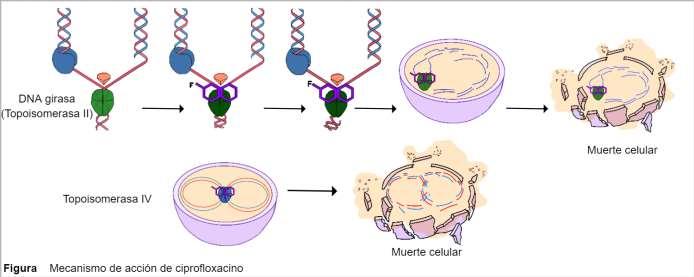
4 minute read
FDAU-19: RAQUITISMO, QUE LA FUERZA DEL SOL TE ACOMPAÑE
22 al 26 de noviembre
FDAU-19: Raquitismo, que la fuerza del sol te acompañe
Advertisement
OLVERA, MA; RIVERA, DP; ROJO, MJ; SANTOYO, MF; TALAVERA, MA; VILLALOBOS, FB.
INTRODUCCIÓN RESUMEN
La ferropenia es la deficiencia de los depósitos sistémicos de hierro, si la deficiencia de hierro se agrava manteniéndose un largo periodo de tiempo se desarrollará anemia ferropénica la cual es una enfermedad hematológica frecuente producida por el fracaso de la función hematopoyética medular en la síntesis de hemoglobina debido a la carencia de hierro.
ETIOLOGÍA
La deficiencia de hierro puede ser consecuencia de: 1. Su ausencia en la dieta
2. Alteraciones en su absorción
3. Un aumento de las necesidades
4. La pérdida de crónica de la sangre.
Como el hierro no se absorbe poco, el incorporarlo con la dieta apenas cubre el requerimiento diario en la mayoría de las personas. Correlación bioquímica Los grupos Hem se sintetizan en la medula ósea en células precursoras de eritrocitos llamadas reticulocitos se forman a partir de 4 anillos de pirrol, la unión de estos 4 anillos formará la protoporfirina IX que se unirán con un átomo de hierro (Fe2+) sintetizando un grupo hemo la unión de 4 grupos Hemo dará la formación de la hemoglobina.
La deficiencia de Hierro en sangre alterara la síntesis de los Grupos Hem y por ende la formación de la hemoglobina sin la formación de esta proteína encontraremos una menor cantidad de eritrocitos en sangre y un menor volumen corpuscular.
DIAGNÓSTICO
En la valoración de la BHC. La hemoglobina como el hematocrito son bajos, normalmente en grado moderado, y se asocian a hipocromía, microcitosis y poiquilocitosis definidas. El hierro y la ferritina son bajos en suero, el % de saturación de la transferrina es bajo. La EF se encontrará signos de anemia como son: fatiga, palidez, disnea con el ejercicio leve. La queilosis y la coiloniquia son signos de ferropenia hística avanzada. La depleción de hierro en el SNC provoca la pica.
22 al 26 de noviembre
TRATAMIENTO
El principal tratamiento se basa en la administración de hierro, puede ser una administración de suplementos de hierro, oral o intravenosa. El objetivo sería restaurar los hematológicos alterados y reponerlos, en algunos casos si es una anemia intensa se hace un tratamiento con una transfusión pero no es necesario en la mayoría de los casos.
CONCLUSIÓN
En conclusión la anemia ferropénica son las deficiencias de hierro y una enfermedad hematológica que se produce por la falla de la función hematopoyética medular. Siendo también el 15% de la población mundial, esta enfermedad se diagnostica por diversas pruebas y también tiene sus respectivos tratamientos siendo asi para una anemia normal o intensa.
ABSTRACT
INTRODUCTION
Rickets, disease associated with deficiency of vitamin D or calcium in the diet; it weakens the bone structure creating deformity in hands and feet. The body obtains calcium from food, such as vitamin D, which needs exposure to sunlight to function. There are three types of rickets: vitamin D deficiency (we will focus on this one); vitamin D resistance; hypophosphatasia.
ETIOLOGY
Vitamin D deficiency causes rickets, which helps the body control calcium and phosphate levels in the blood; when these are low, the body does not produce hormones that stimulate the release of calcium and phosphorus in the bones, resulting in weak and soft bones.
EPIDEMIOLOGY
Rickets has an average incidence of 4.3 per 100 000 (0-0.9 years) per year. In Mexico City, 52% of children, 23% of adolescents and 20% of adults have vitamin D deficiency. In contrast to children, in the adult group the highest deficiency occurred in rural areas.
BIOCHEMICAL CORRRELATION DISCUSSION
Ergocalciferol and cholecalciferol are inactive forms, and when they enter the circulation they must undergo two hydroxylations, the first in the liver, giving rise to 25-hydroxychalciferol or calcidiol. This is the depot form. The second hydroxylation in the renal cortex, by means of the enzyme alpha-1hydroxylase, and produces 1,25-hydroxychalciferol or calcitriol. It is the active form. The latter has effects at intestinal level, increasing in the formation of calbindin, which increases calcium absorption. At the renal level it increases the reabsorption of calcium and phosphate by the epithelial cells of the renal tubules. At the bone level, they participate in calcium resorption and storage. Vitamin D deficiency causes bone resorption and bone softening.
DIAGNOSTIC
Physical examination Bone deformities: Soft skulls.
22 al 26 de noviembre
Presence of a pronounced arch in the legs.
Occasionally anomalies in the rib cage.
Wrists and ankles longer or thinner than normal.
X-rays and bone densitometry test confirm a diagnosis. Biochemical examination. Radiography: DEXA
TREATMENT
Calcium and vitamin D administration is: - Minimum 2000 IU/day (50 μg) of vitamin D for 3 months. - Calcium via oral 500 mg / day, as dietary intake or supplement, used in conjunction with vitamin D. - The appropriate route of administration is oral because it rapidly restores 25 OHD levels as opposed to intramuscular. - Administration of vitamins D2 and D3 should be daily. - For large single doses, vitamin D3 is preferable. - Vitamin D administered for a minimum of 12 weeks, some children may require longer duration of treatment.
CONCLUSIONS
Rickets can be detected by DEXA; vitamin D deficiency creates deformity and weakness that can weaken the bone structure creating deformity in hands and feet, but it can be treated by calcium and vitamin D administration.










